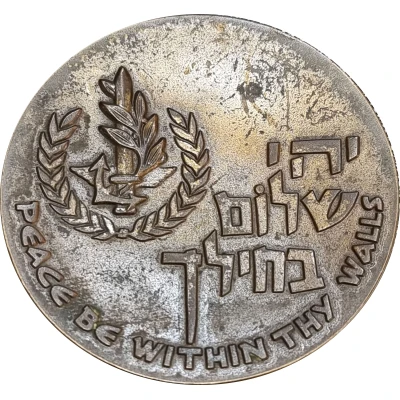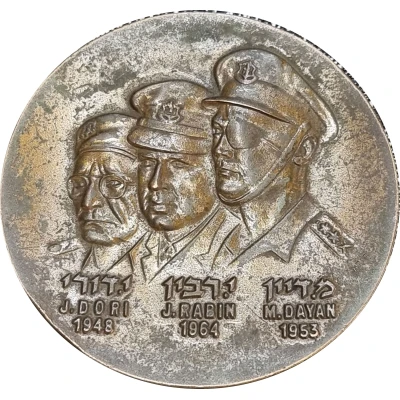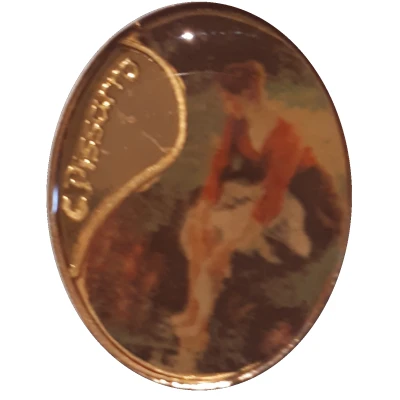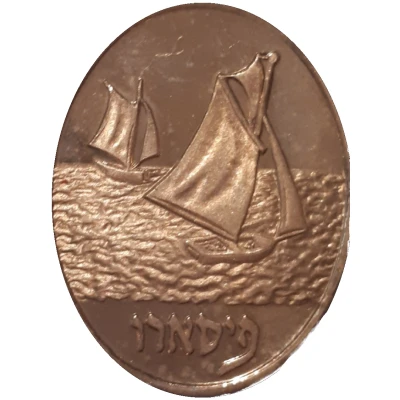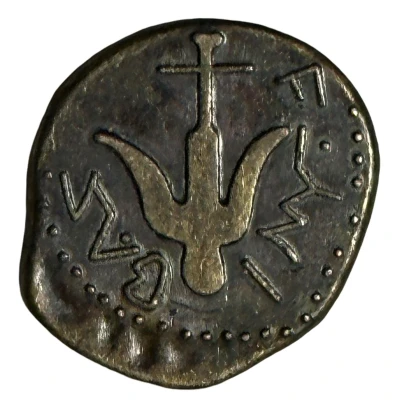
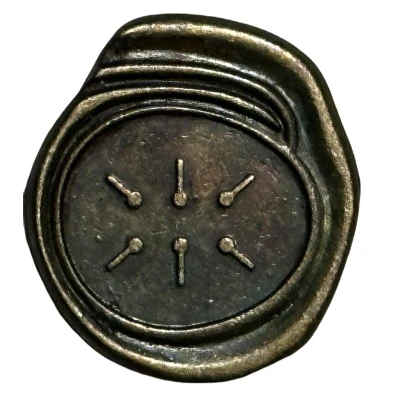

© JLHare (CC BY-NC-SA)
Replica - Widow's Mite ND
| Bronze | 1.63 g | 18.8 mm |
| Location | Israel |
|---|---|
| Type | Medals › Coin replicas |
| Composition | Bronze |
| Weight | 1.63 g |
| Diameter | 18.8 mm |
| Thickness | 1.2 mm |
| Shape | Round (irregular, 18.8 mm (width) x 16.8 mm (height)) |
| Demonetized | Yes |
| Updated | 2024-11-12 |
| Numista | N#229194 |
|---|---|
| Rarity index | 74% |
Reverse
The back shows six points of a star (or a spoked wheel) surrounded by a diadem
Edge
Plain
Comment
Modern replicas ...Mite is the 1611 King James Bible translation for the Greek λεπτον, or Lepton. They were struck under Coponius, the first Roman procurator of Judea from 6-9 AD, and were still in circulation during Jesus’ lifetime. They are frequently mentioned in the New Testament.
Ancient Roman widow's mite coins of the Bible parable, of the poor widow and the unselfish gift of her last two mites coins (Mark 12:41-44). Approximately [3/4 inch] the size of real coin.
The widow's mite is presented in the Synoptic Gospels (Mark 12:41-44, Luke 21:1-4), in which Jesus is teaching at the Temple in Jerusalem. The Gospel of Mark specifies that two mites (Greek lepta) are together worth a quadrans (the smallest Roman coin).
Widow’s Mites, also known as Leptons or Pruta, were the smallest known denomination in ancient Jewish currency. These were regular coins from the Maccabees to the time of Herod, but they became famous worldwide with their mention in the New Testament. The word Mite was not what they were called in Jerusalem at the time of Jesus, but the name was included later in some of the earlier English versions of The Bible. Quote: "And He looked up and saw the rich putting their gifts into the treasury, and He saw also a certain poor widow putting in two mites. So He said, “Truly I say to you that this poor widow has put in more than all; for all these out of their abundance have put in offerings for God, but she out of her poverty put in all the livelihood that she had." —Luke 21:1-4
Alexander Jannaeus (Yehonatan), 103 - 76 B.C., Prutah or Lepton.
Widow's Mites - Bronze Prutah or Lepton, Hendin 469 - 472, Jerusalem mint, 95 - 76 B.C.
